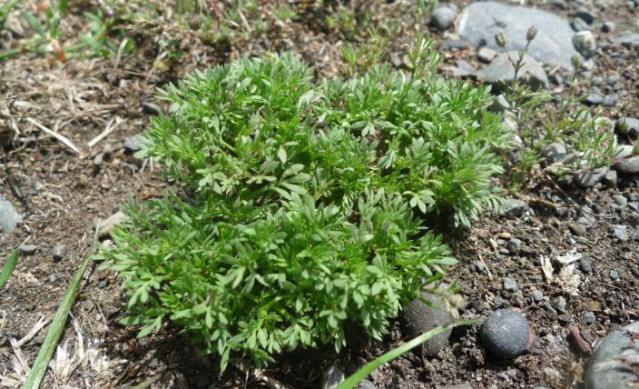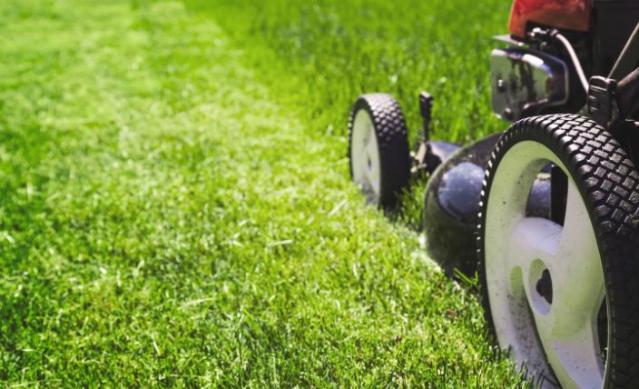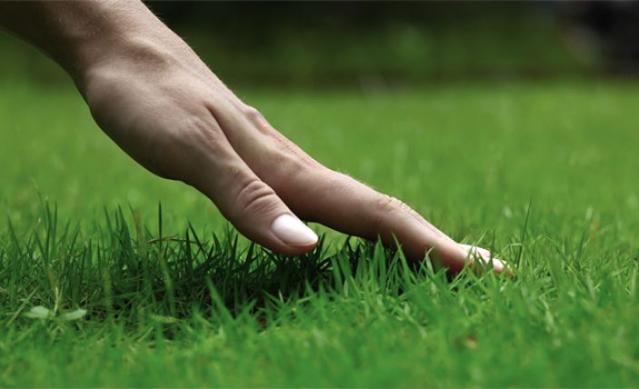Weed Control
The Dreaded Onehunga Prickle Weed
The dreaded prickle weed is hated by children and adults alike, this horrible weed also known as Onehunga weed or the tongue-twisting botanical name Soliva sessilis has fine paper like thorns that prick into bare feet when taking a casual stroll across the lawn in summer…yes, that weed!
That’s why the Onehunga weed is one of the most hated turf weeds in New Zealand. The tiny annual weed escapes the blades of the mower without being touched each time the lawn is mowed. Usually acting as a winter annual spending most of the summer as a dormant seed in the soil. In autumn the seed germinates once the soil moisture content increases but before the grass begins recovering from the summer dryness.
Once they are established, the plants grow throughout winter producing clusters of spiny fruits at ground level ready for some unsuspecting passer-by to step on them and disperse the seed elsewhere in the lawn. In summer, when the lawn begins to dry out, the weed dies, having finished its life cycle, leaving spiny fruits or prickles in the lawn. In certain circumstances the winter annual can germinate in spring, which can make it a tricky customer to deal with…but there is always a solution…keep reading.
What does this Weed look like?
Before dealing with this dreaded weed it is important to correctly identify it. Onehunga is often confused with other weeds in the lawn and garden namely yarrow and soldier’s button. Onehunga weed has finely divided leaves and is sometimes mistaken for yarrow, however, yarrow is a perennial weed which has a creeping rhizome system underground. Onehunga weed has a shallower root system and is fibrous. Yarrow also has more leaflets per leaf than Onehunga weed.
Another imposter to the Onehunga weed is the soldier’s button (Cotula australis), this weed is generally found in gardens and paths, not in the lawn. Soldier’s button is an annual but is distinguished by the “brown buttons” that it produces in the form of seed stalks compared to Onehunga weed which has no visible seed stalks.
How to Control it?
Even though Onehunga weed is only a small annual weed, phenoxy herbicides such as MCPA, 2,4-D and mecoprop are not very successful in controlling the weed alone. A combination of dicamba and one of these other weed killers will yield much better results. For example 2,4-D/dicamba or MCPA/mecoprop/dicamba .
The most common way to commercially control this weed in New Zealand turf is with a clopyralid or a picloram/triclopyr mixture. However, a recent study has shown that a strain of Onehunga weed in a few locations north of Auckland has become resistant to both clopyralid and picloram, and is now being found in other parts of New Zealand too. It would probably be wise not to rely too heavily on any one particular herbicide year after year to control Onehunga weed.
In the warmer parts of the country, a mixture of herbicides like mecoprop, ioxynil and bromoxynil and bentazone have been used to good effect. For the treatment of Onehunga in golf courses, a much-diluted rate of metsulfuron is sometimes used in New Zealand for turf weed control, although this is not a registered use for this weed killer, and is not recommended for the purpose of treating ryegrass sports fields.
Regardless of which herbicide is used on the Onehunga weed, it is best to kill the weed before the fruits begin forming and cause the horrible prickles in the feet. If a long term approach is taken to dealing with the weed by spraying it timeously every year the seed will stop multiplying and the weed problem will be eliminated. However, in smaller, high traffic areas that are infested, it may be easier to remove the entire lawn and start again.
Lawn Health & Mowing
A healthy lawn is far less likely to be susceptible to weed infestation and environmental stresses like drought if kept in a healthy state. One of the most important aspects of maintaining a healthy weed-free lawn is the mowing technique. By mowing less intensely and more frequently the leaf of the lawn is kept short enough to remain neat and is stimulated regularly enough to grow prolifically. The goal, therefore, is to maintain a consistent mowing schedule with a well-serviced mower set at the correct height.
A slightly longer lawn will restrict the establishment of shorter broadleaf weeds making it harder for them to root and draw nutrients when competing with the thriving lawn.
Lawn Nutrients
A lawn is a plant and requires regular feeding to keep it healthy and thick making it more resistant to the invasion of weeds. Correct fertilising at the right time of the year with lawn specific fertiliser will ensure the grass remains strong and healthy. In heavy clay soils, it is beneficial to add a Soil Conditioner once a year. Soil Conditioner is best applied in August or September, 14-21 days prior to the lawn fertiliser application. Soil Conditioner increases the pH of the soil making more nutrients in the soil available for the lawn to use. It also adds calcium to the soil which plays an important role in the plant growth by strengthening its physical structure, increasing nutrient uptake and protecting it from disease.
In conclusion, the best solution to dealing with weeds particularly the dreaded Onehunga is making sure the lawn stays healthy and strong in the first place. However, if this ship has sailed, a combination of correctly applied herbicides by a trained professional at the right time of year will get rid of the problem over time.
Image Credit: Onehunga weed, Soliva sessilis Ruiz & Pav., collected 9 February 2011, Mana Island, around buildings at landing area., New Zealand. Field collection 2010-2011. CC BY-NC-ND 4.0. Te Papa (SP089708)



